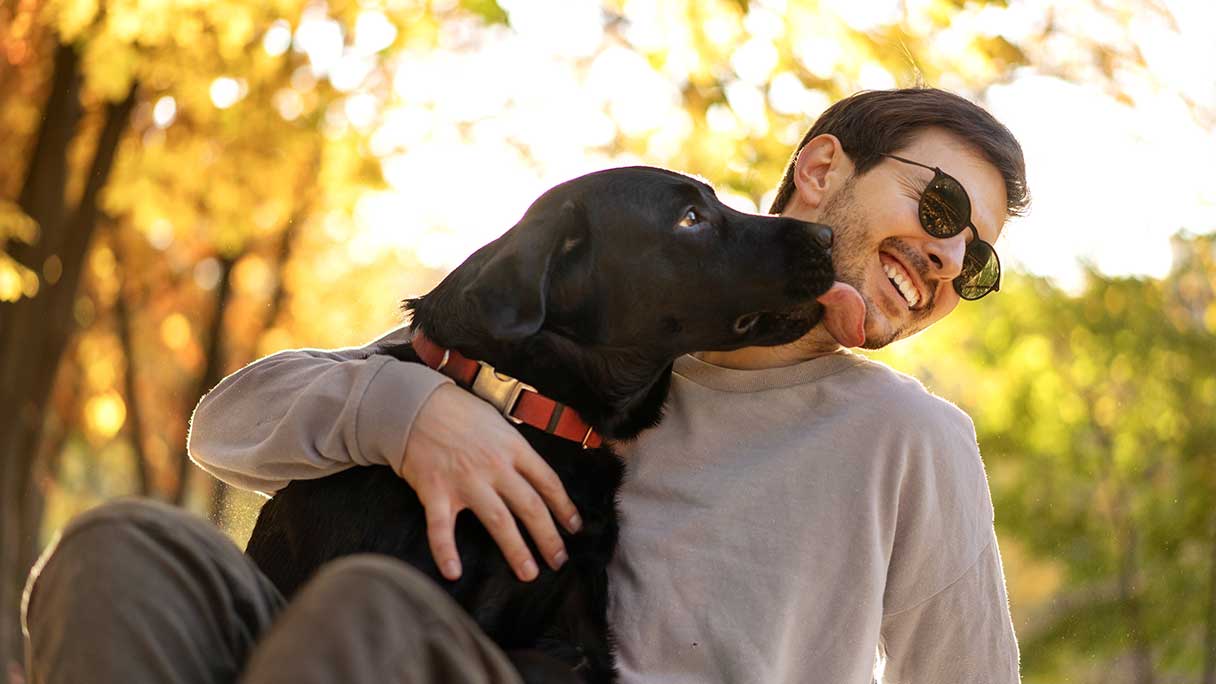Dog owners may struggle with the question of whether to spay or neuter their pets. Unless you’re a responsible breeder or you keep show dogs, usually it’s best to have them “fixed” to prevent unwanted puppies, as well as for a whole host of health and behavior benefits. Find out more about spaying and neutering, including how much these procedures cost, what’s involved and how they can help your pup live longer.
Spaying and Neutering Dogs Explained
Both spaying and neutering refer to the removal of a pet’s reproductive organs. Although sometimes used interchangeably, they each refer to a different surgical procedure. The best way to keep it straight is to remember that only females can be spayed, while only males can be neutered. So what does spayed mean? And what does neutering mean?
- Spaying is the removal of a female’s uterus and ovaries. It refers to either of two procedures: ovariohysterectomy (removal of both the uterus and the ovaries) or ovariectomy (only the ovaries are removed).
- Neutering is the removal of a male’s testicles and associated structures.
Benefits of spaying a dog
In female dogs, an ovariohysterectomy will prevent uterine cancer as well as an infection of the uterus. Spaying also reduces the chance of your pet developing mammary cancer, especially if done before your dog’s first heat cycle.
If you’ve ever experienced a dog in heat, then you already know it can be a trying time for both you and your dog. Warding off unwanted attention from male dogs, bloody vaginal discharge, unpleasant odor, erratic and aggressive behavior and constant whining and crying can all be prevented by spaying your dog.
Benefits of neutering a dog
Neutering your male dog eliminates any chances of testicular cancer and decreases the chances of other health issues relating to the prostate. Neutering also reduces problematic behaviors in male dogs, like inappropriate marking and aggression toward other male dogs.
It will also reduce the likelihood that your dog will try to escape and run away to find a girlfriend, a behavior that can be dangerous both for him and for other dogs, especially if he’s prone to fighting.
How Much Does It Cost to Spay or Neuter a Dog?
The national average cost* for spaying a dog is $455, with a range of $361 to $829. The average cost* of neutering a dog is $487, with a range of $385 to $885.1 Costs may vary based on a variety of factors.
Calculate the cost of spaying a dog near you*

Explore procedure costs in your area
Average cost to spay or neuter a dog by state/district
Here is the average cost* of spaying and neutering a dog in each of the 50 states and the District of Columbia:1
| State/District | Average cost (neuter) | Average cost (spay) |
|---|---|---|
| Alabama | $408 | $383 |
| Alaska | $578 | $543 |
| Arizona | $505 | $469 |
| Arkansas | $404 | $378 |
| California | $651 | $607 |
| Colorado | $493 | $464 |
| Connecticut | $523 | $491 |
| Delaware | $477 | $445 |
| District of Columbia | $661 | $619 |
| Florida | $479 | $448 |
| Georgia | $425 | $398 |
| Hawaii | $874 | $814 |
| Idaho | $475 | $447 |
| Illinois | $439 | $411 |
| Indiana | $420 | $394 |
| Iowa | $418 | $389 |
| Kansas | $403 | $376 |
| Kentucky | $433 | $403 |
| Louisiana | $433 | $403 |
| Maine | $510 | $475 |
| Maryland | $540 | $507 |
| Massachusetts | $685 | $635 |
| Michigan | $422 | $396 |
| Minnesota | $446 | $415 |
| Mississippi | $390 | $368 |
| Missouri | $412 | $384 |
| Montana | $483 | $451 |
| Nebraska | $437 | $408 |
| Nevada | $470 | $443 |
| New Hampshire | $524 | $493 |
| New Jersey | $539 | $501 |
| New Mexico | $435 | $408 |
| New York | $575 | $538 |
| North Carolina | $459 | $426 |
| North Dakota | $429 | $400 |
| Ohio | $441 | $412 |
| Oklahoma | $402 | $375 |
| Oregon | $521 | $489 |
| Pennsylvania | $446 | $416 |
| Rhode Island | $523 | $489 |
| South Carolina | $447 | $418 |
| South Dakota | $432 | $404 |
| Tennessee | $422 | $395 |
| Texas | $430 | $403 |
| Utah | $479 | $451 |
| Vermont | $534 | $501 |
| Virginia | $473 | $441 |
| Washington | $534 | $500 |
| West Virginia | $393 | $367 |
| Wisconsin | $453 | $425 |
| Wyoming | $445 | $417 |
Does Pet Insurance Cover Spaying or Neutering?
While spay or neuter surgery may not be covered by accident and illness pet insurance plans, some pet insurance plans may cover spaying and neutering as part of add-on health and wellness packages. There may be a waiting period between when you purchase your pet insurance plan and when you can use it to cover your pet’s healthcare, so it’s best to purchase it before your dog or puppy will actually need it.2
Local animal shelters and pet rescue organizations sometimes offer free or steeply discounted spay and neuter events, so contact your local shelters if paying for these procedures out of pocket might be a challenge.
What Age Should You Consider Spaying or Neutering a Dog?
Because spaying and neutering both require dogs to be placed under general anesthesia, dogs must be both old enough and healthy enough to reduce the potential of anesthesia-related complications.
The best age at which to have your dog spayed or neutered depends on the dog. While most small breeds can benefit from early spaying or neutering, studies have shown that spaying or neutering dogs before their growth plates have closed can increase the possibility of certain cancers, as well as joint health issues.
When deciding the best time to spay your dog or puppy, it’s best to talk to your vet, taking into consideration your dog’s size, breed, lifestyle and health predispositions.
Dog Spay/Neuter Process
Spaying or neutering your dog can be a major event for you both. Here’s an overview of the procedure process below so you can prepare.
Presurgery
Before the procedure, the vet will need to prep your dog for surgery. They’ll do a thorough examination of your dog, including blood work, to ensure that your pup is healthy enough to undergo surgery. You’ll also need to provide the vet with your dog’s complete medical history, including their vaccination history and any prescription medications they take.
Depending on your vet, this may be done at a separate appointment before scheduling the procedure, or it may be done the morning of the surgery. In the latter case, your vet will likely contact you if they find anything that prevents them from going through with the procedure.
Procedure
Your vet may instruct you not to give your dog anything to eat or drink after a certain time the night before the surgery. Typically, you’ll drop your pooch off at the veterinary clinic early in the morning on the day of the surgery and pick them up by the end of the day.
While your dog is there, they’ll be injected with pain medication and then placed under general anesthesia while the vet performs the spay or neuter surgery. Afterward, they’ll be moved to an area where they can be closely monitored and kept comfortable while they wake up from the anesthesia.
Your vet will most likely give you a call at this time to let you know how your pup is doing and how the surgery went, as well as an approximate time you can expect them to be ready for pickup.
When you pick up your dog, you’ll be given a set of postoperative recovery instructions, and you may also be provided with medications to give your dog at home. Your dog will likely still be groggy from the anesthesia and may need to sleep it off overnight. It can take up to 24 hours before anesthesia completely wears off and they’re back to feeling fully awake.
Recovery
You’ll need to provide your pup with a quiet place where they can rest in undisturbed comfort. And while it may be a bummer for your dog, making them wear an e-collar or a bodysuit is a must. This can help protect your pet from licking his/her incision, which could potentially cause an infection or delay healing.
Follow your vet’s care instructions carefully, administering medications at the appropriate intervals and watching them closely for signs of postsurgical complications or infections.
For 10 to 14 days, you’ll need to limit your dog’s activity and give them plenty of rest, and keep them from bathing, swimming or any other activities that might get their surgical wound wet.
Your vet should also let you know if or when stitches will need to be removed. They’ll also explain signs of potential issues with recovery to watch out for.
Post-recovery
Your pup should soon be fully recovered and back to their usual self. While their fundamental personality won’t change, you might notice some behavioral changes, usually for the better. While neutering is no guarantee that these behaviors will stop, your neutered male may stop humping and trying to run away and may not spray urine to mark his territory as much as he used to, especially in the house. Aggression toward other dogs may be reduced as well.
Behavioral differences in spayed females are usually less obvious, but your dog might have less energy and more of an appetite, so you may want to monitor her daily food intake and encourage exercise to ensure she doesn’t gain weight. Because the decrease in sex hormones is likely to slow metabolism in either gender, you may want to do this with your male dog, as well.
Side Effects of Dog Spay or Neuter Surgery
While both spaying and neutering are generally considered safe and effective procedures, any procedure that involves general anesthesia carries the potential for complications that could result in death. Your vet will do everything they can to reduce the chances of complications, and they won’t operate on your dog if they determine there’s a high chance of complications during surgery.
Other potential complications or side effects include:
- Hernias in females
- Incomplete removal in females
- Incontinence
- Infection or inflammation at the incision site
- Internal bleeding
- Scrotal bruising or swelling in males
- Weight gain
Infection and inflammation of the incision are by far the most common postsurgery complications, while the rest are quite rare. You can avoid any infection or damage to the incision with proper wound care and by preventing your dog from licking or chewing their incision by having them wear an e-collar or a bodysuit.
Spay/Neuter for Your Dog’s Health and Happiness
While any complications associated with spaying or neutering are minimal, the benefits are substantial. These are simple procedures that can add to both the length and quality of your dog’s life.
Frequently Asked Questions About Dog Spaying and Neutering
Here are some commonly asked questions dog owners have about spaying and neutering.
CareCredit Credit Card Financing for Dogs
The CareCredit credit card provides a convenient way to pay for your pet’s vaccinations and other health and wellness expenses, including exams, medications and products at providers in the CareCredit network.** Continue your wellness journey by downloading the CareCredit Mobile App. You can find a provider on the go, manage your CareCredit account and easily access the Well U blog for more great articles, podcasts and videos. Use our Acceptance Locator to find a veterinarian that accepts CareCredit to help keep your pet healthy and happy for a lifetime of love.
In addition to pet care, you can also use your CareCredit credit card for dentistry, cosmetic, vision, hearing, health systems, dermatology, pharmacy purchases, spa treatments and so much more within the CareCredit network. How will you invest in your health and wellness next?
Expert Reviewer
Dr. Kathy Wiederkehr (Wentworth), V.M.D.
Dr. Kathy Wiederkehr (Wentworth) has been practicing veterinary medicine at pet care facilities in California since 2001. Most recently, she served as medical director of the VCA PetPoint Medical Center and Resort in Irvine. She is a graduate of the University of Pennsylvania School of Veterinary Medicine and became board-certified as a diplomate in Canine and Feline Practice by the American Board of Veterinary Practitioners in 2010.
Author Bio
Jean Marie Bauhaus is a freelance writer and novelist who has been writing pet content since 2013. Her work has appeared on Forbes.com, Hill’s Pet, Chewy, AKC.org and more.







